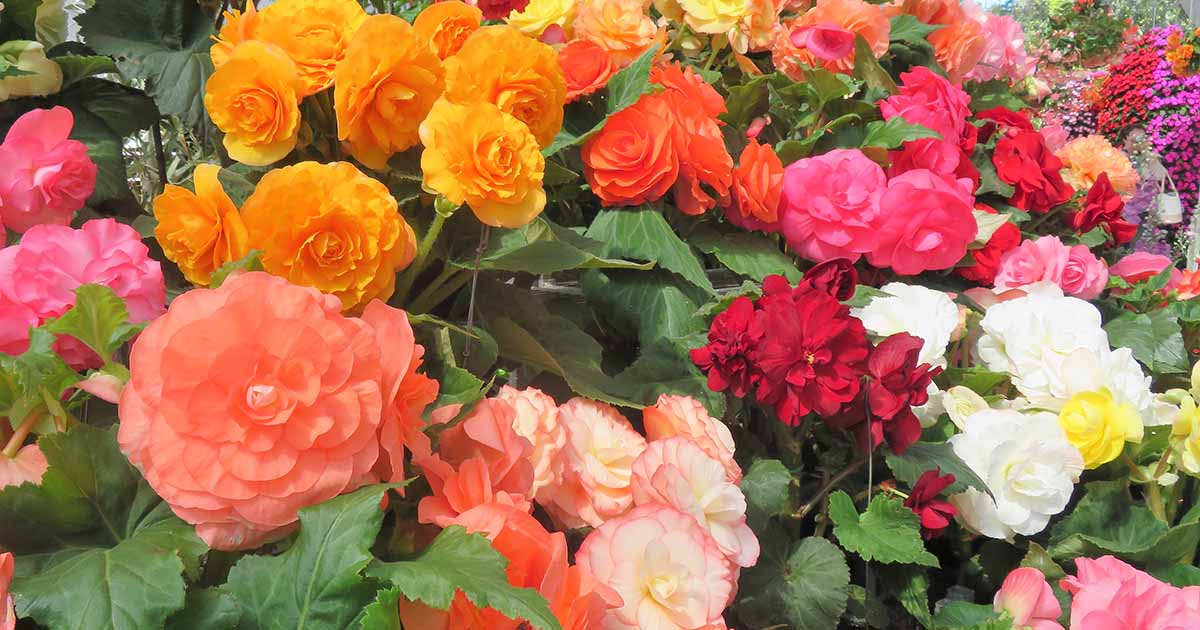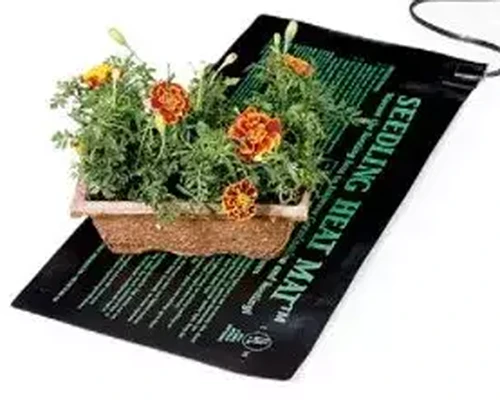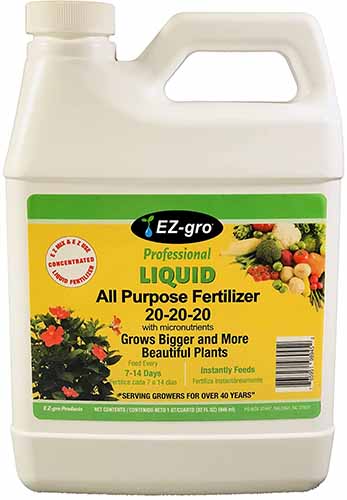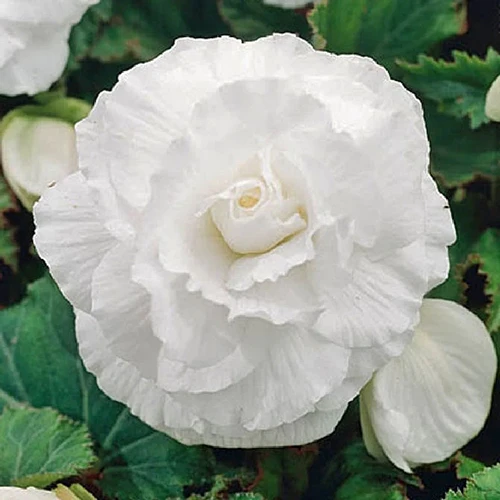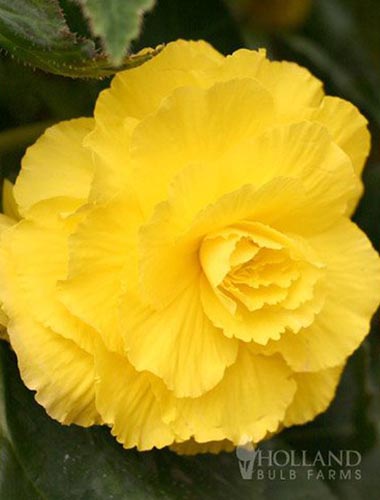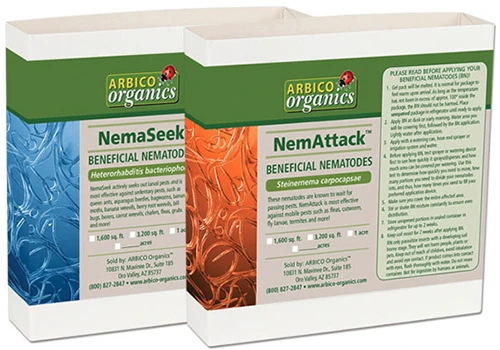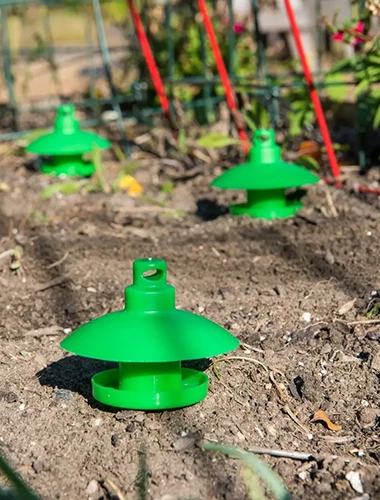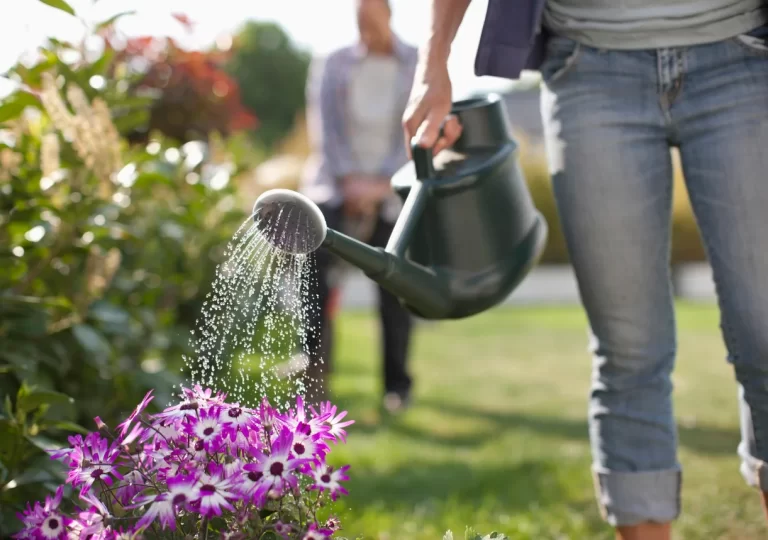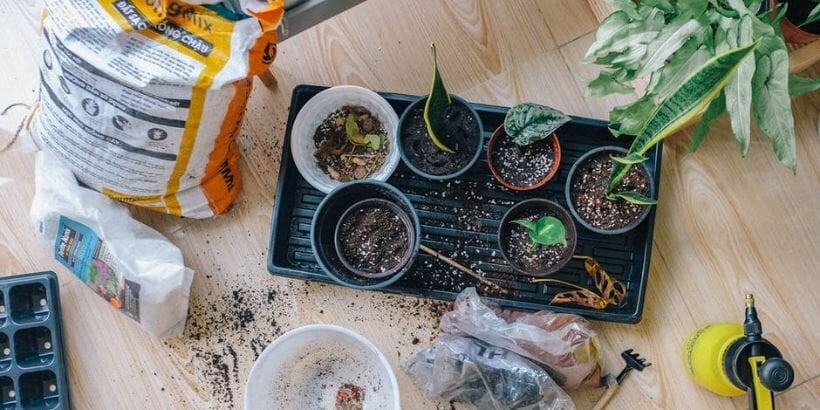Learn how to Develop and Look after Tuberous Begonias
Begonia x tuberhybrida
The concept of a “hybrid” has at all times struck me as tremendous cool.
From demigods in Greco-Roman mythology to the large feline liger, combining two totally different species to finish up with one thing new and thrilling usually results in greatness… and tuberous begonias are proof of this.
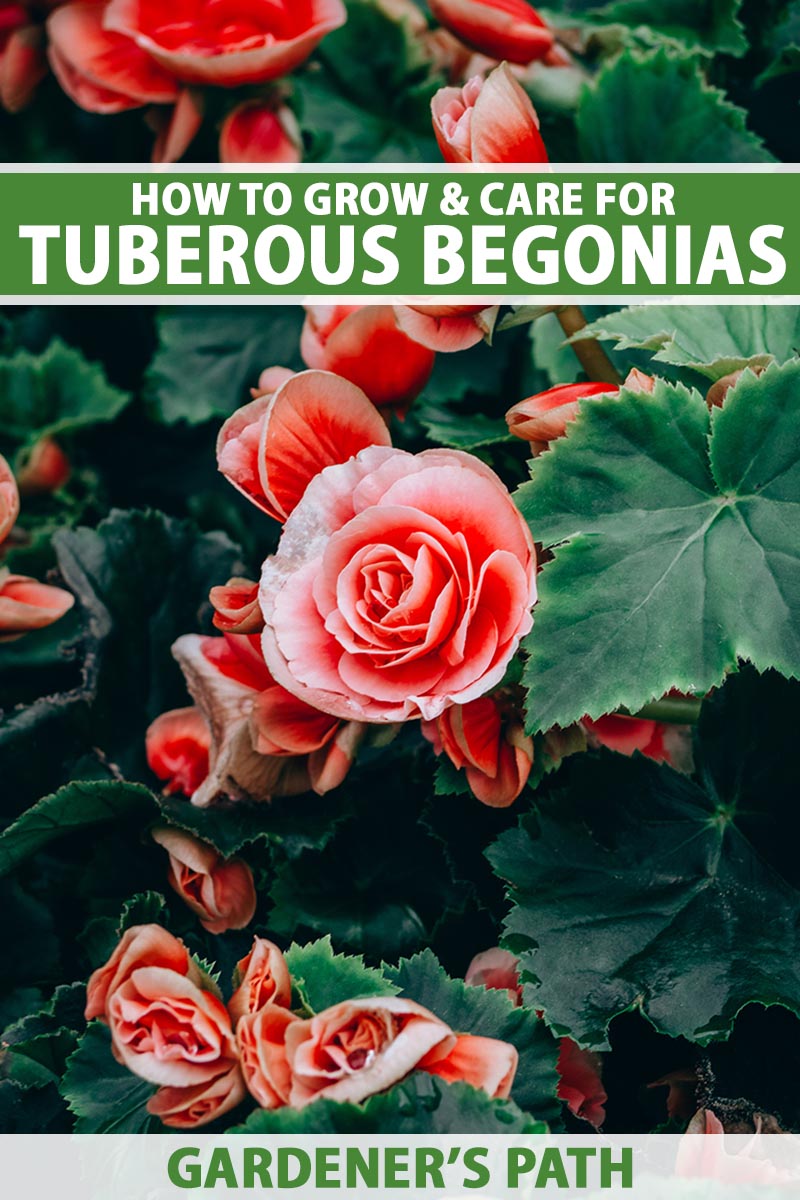
We hyperlink to distributors that will help you discover related merchandise. In case you purchase from considered one of our hyperlinks, we might earn a fee.
The Begonia genus is already fairly enticing, so the way in which that Begonia x tuberhybrida is understood for being an particularly lovely begonia? Not a simple feat to tug off.
And why wouldn’t you contemplate it among the many finest? I imply, these lovely bloomers are in impact customizable, since there are such a lot of totally different flower colours, petal shapes, and rising habits to select from. Nearly anybody can discover a selection they like.
And after giving this information a strong read-thorough, you’ll be prepared to provide your tuberous begonias the tender, loving care that they deserve.
What Are Tuberous Begonias?
Earlier than diving into the particular area of interest the place tuberous begonias dwell, it’s essential to go over begonias as a complete.
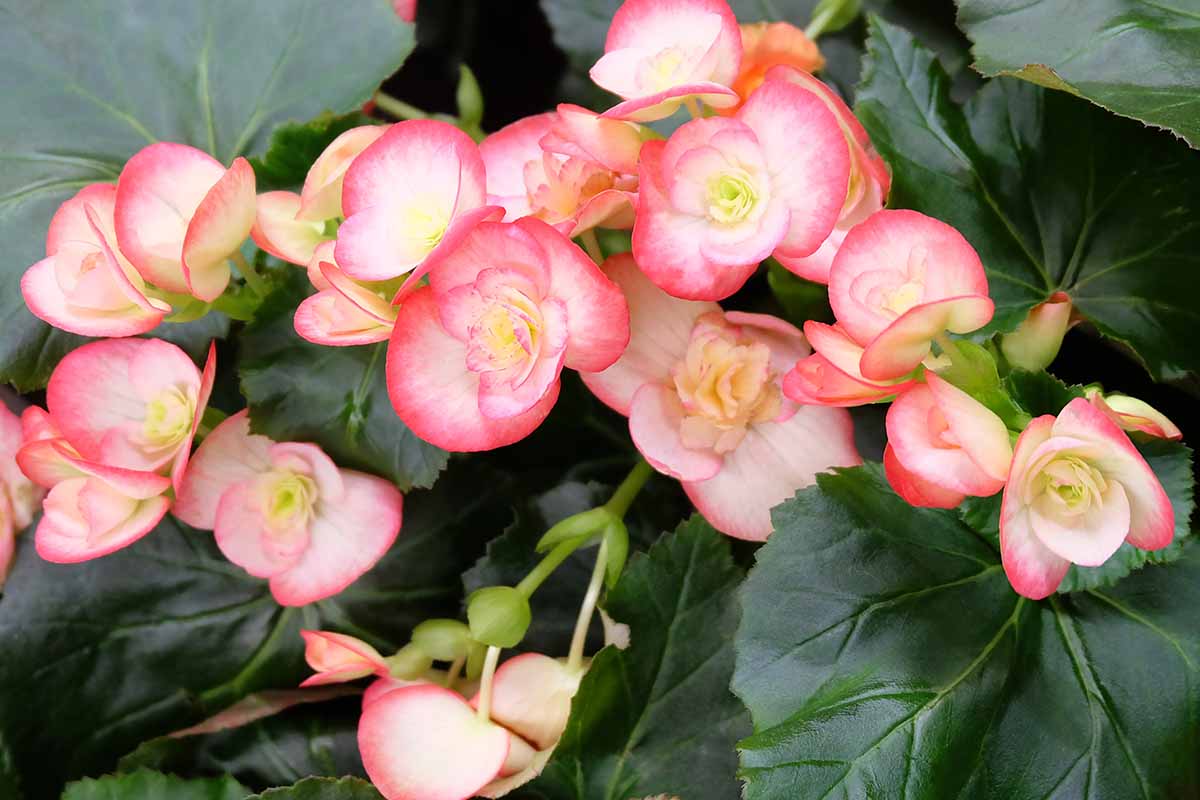
Unsurprisingly, these vegetation belong to the Begonia genus, which is a part of the Begoniaceae household.
This large genus consists of greater than 2,000 totally different species of flowering perennials, which collectively hail from tropical and subtropical areas the world over.
An adaptation to area of interest environments – together with a restricted capability for widespread seed dispersal – has resulted in a wide range of small, but numerous begonia populations worldwide.
Such variety has warranted the American Begonia Society to whip up a casual classification of eight or so totally different begonia teams: cane-like, rhizomatous, semperflorens, rex-cultorum, trailing or scandent, thick-stemmed, shrub-like, and tuberous – and it’s the latter that we’ll be protecting right here.
Also referred to as Begonia x tuberhybrida, tuberous begonias are a bunch of hybrids which, in comparison with different begonias, are arguably essentially the most gorgeous.
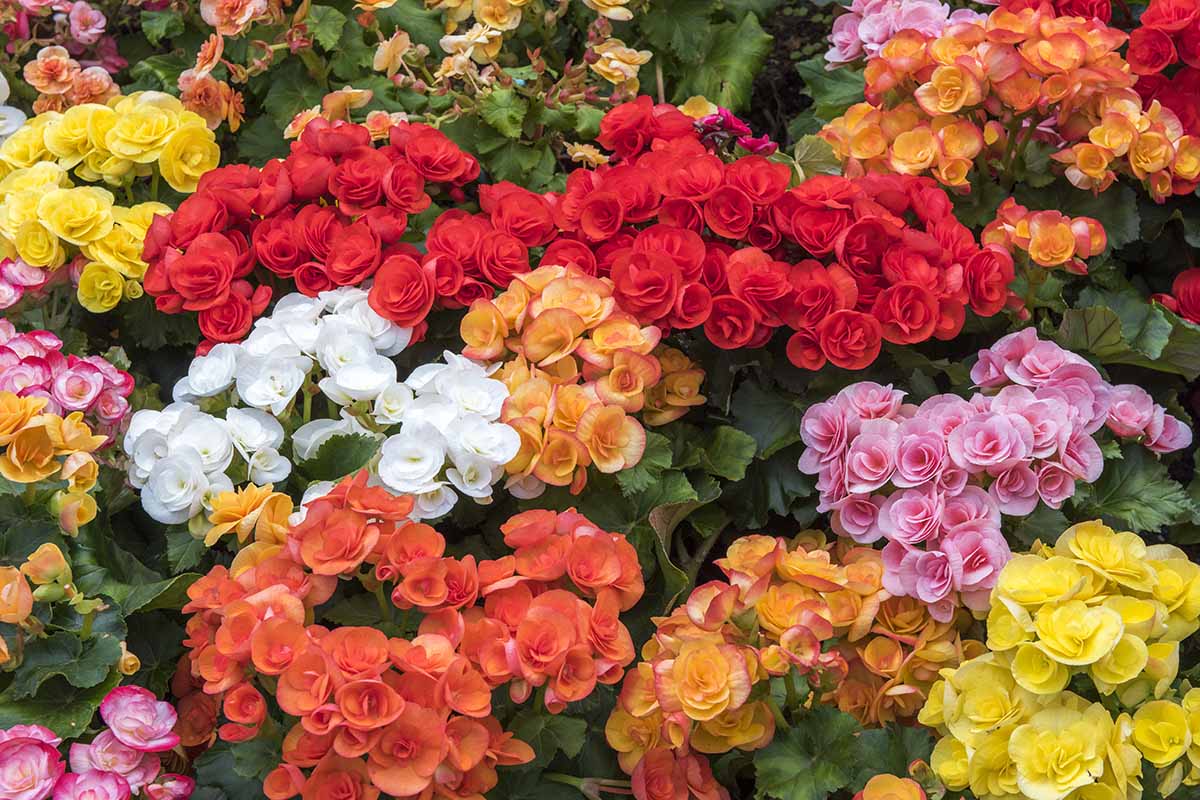
Sitting atop waxy, pointed, and oval-shaped inexperienced leaves, the flowers bloom in orange, pink, pink, white, or yellow hues. Stated blooms emerge from late spring till the primary frost in fall.
The plant as a complete grows to a peak of six to 18 inches whereas spreading 12 to 18 inches, and is hardy in USDA Zones 9 by 11.
These vegetation might exhibit varied flower shapes, petal sorts, and rising habits, which has resulted within the creation of 13 casual tuberous begonia teams for ease in identification.
What each tuberous begonia does have in frequent, although, is true there within the title: a tuberous root system.
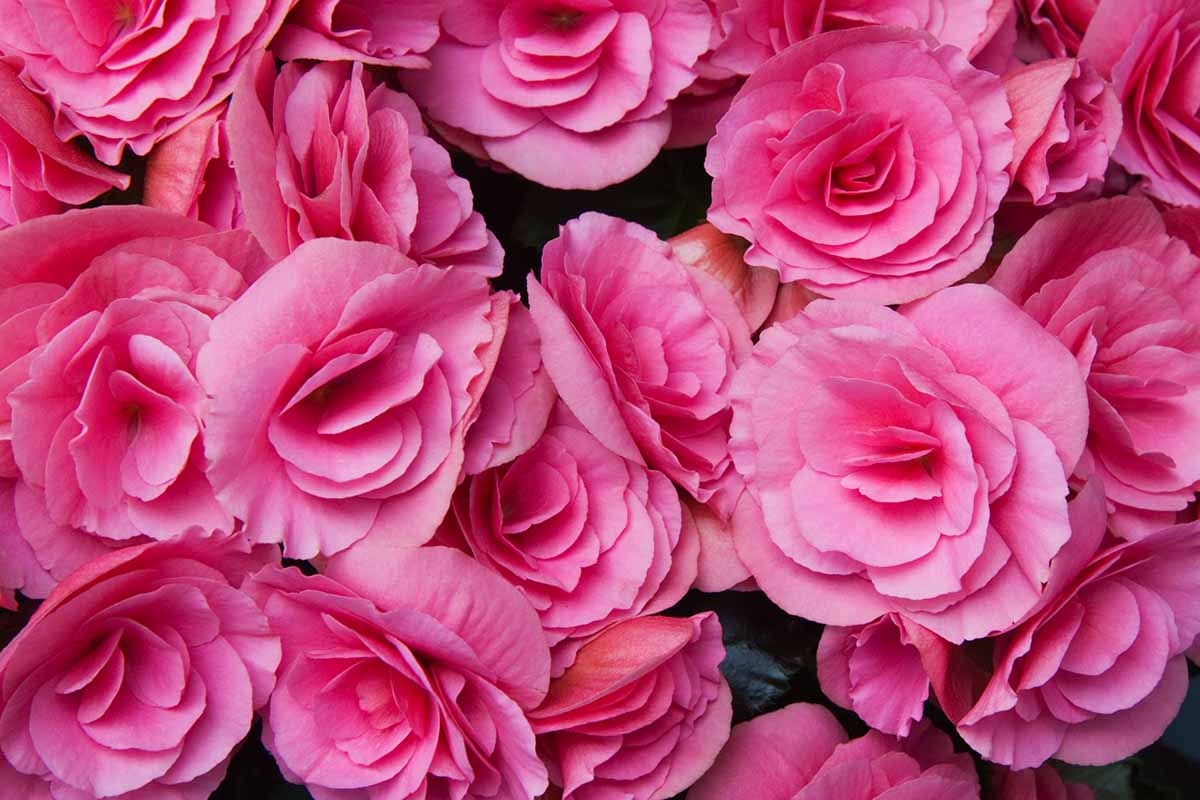
Tuberous begonias additionally undergo a dormant interval, when the tubers could be lifted and saved for later replanting.
The tubers truly comprise poisonous calcium oxalates, which may trigger vomiting and salivation in frequent family pets similar to cats and canine. So if doable, preserve your fur infants away from these plantings!
Cultivation and Historical past
As talked about earlier, begonias could be discovered within the tropics worldwide.
The 14 or so dad and mom of the tuberhybrida cultivars, nonetheless, hail from the excessive altitudes of the Andes Mountains, positioned in South America.

Within the 1860s, British plant collector Richard Pearce journeyed to the Andes, found a number of begonia species in Bolivia and Peru, and subsequently returned to Europe with specimens.
A few of these had been used to hybridize the primary tuberhybrida cultivars.
By the flip of the twentieth century, the cultivation and sale of B. x tuberhybrida specimens had nicely and really begun in Europe and North America.
Since then, tuberous begonias have developed a popularity for flaunting massive, gorgeously showy flowers… one which will have drawn you to this very information.
Propagation
Serious about cultivating tuberous begonias? If that’s the case, you’ve made a wonderful resolution!
To accumulate some, you’ll must propagate them, and your finest avenues for doing so are from seed, from stem cuttings, from tubers, or by way of transplanting.
A quick word on propagation potting sizes: Ideally, be sure the roots have about one to 1 and a half inches of house out there on all sides, away from the container partitions.
From Seed
To accumulate seeds, you’ll be able to both buy them or collect them from accessible specimens, whether or not in your individual backyard or a buddy’s.
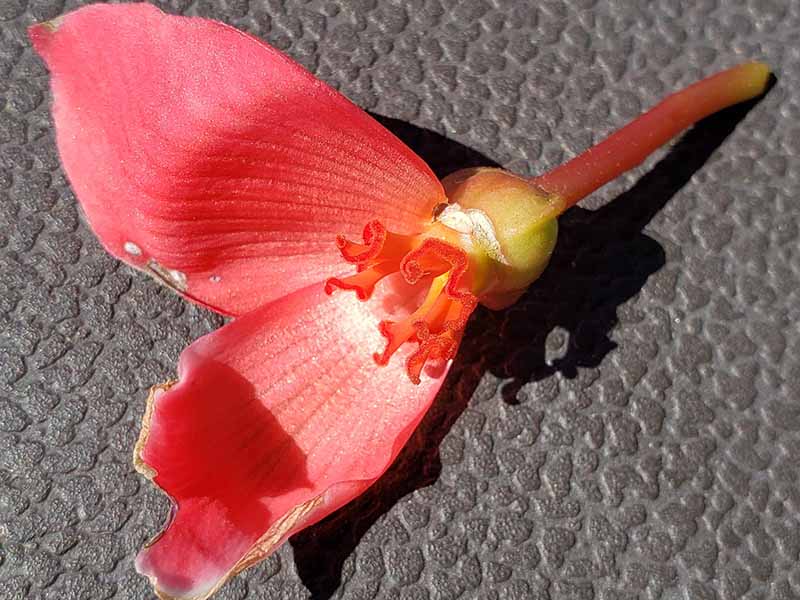
A dried, ready-to-remove seed pod will exhibit a golden brown hue, at which level you’ll be capable to gently pluck it from its stem. To dry the seed pods, set them on a bit of paper for 3 to 10 days.
The tiny, dust-like seeds inside will probably be prepared to reap from the dried seed pots once they’re golden brown in coloration. In the event that they’re a lighter cream coloration, then you definately’ve harvested prematurely.
To entry the seeds, dissect a pod over a bit of paper with tweezers to reveal the locules, or seed-containing chambers. As soon as they’re uncovered, dump the seeds out onto the paper.
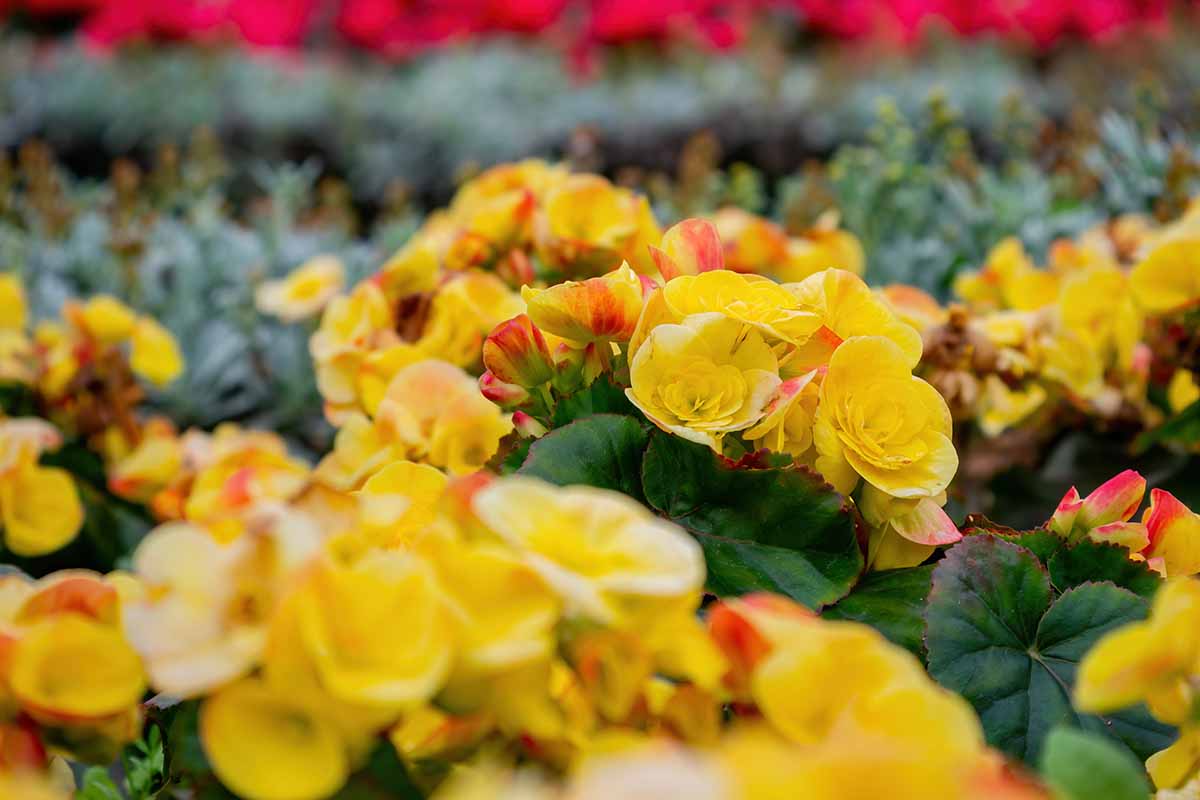
Not each seed will probably be good for sowing, although. Pretty much as good seeds roll higher than the dangerous ones, separate them by gently tilting the seed-bearing paper over a second sheet of paper.
The chaff ought to stay on the primary sheet, whereas the viable seed ought to roll proper onto the second sheet.
You know the way the ice in your drink typically sticks to the underside of the cup, and doesn’t come free till the cup angle is perilously steep mid-drink, leaving your face to finish an impromptu ALS Ice Bucket Problem of types? The identical precept applies right here, so improve the angle of your sheet progressively.
Pour the nice seeds into paper envelopes, label them with the date of assortment, and retailer them within the fridge, the place they need to stay viable for a number of years.

For summer time blooms, you actually ought to begin your seeds in December or January.
To take action, fill a seed tray with a 50:50 mixture of sphagnum peat moss and perlite, moisten the media, and gently unfold the seeds onto the floor in parallel traces spanning the size of the tray.
This may be made simpler by folding a bit of paper in half and utilizing the crease to information the seeds onto the media.
As soon as sown, cowl the seeds with a skinny dusting of media. Moisten the floor with a water-filled spray bottle, then cowl the tray with clear plastic wrap.
Expose the tray to oblique mild indoors, whereas protecting the media moist. Germination ought to take round 10 days with a soil temperature of 70°F, or as much as three weeks at decrease indoor temperatures.
For a couple of further levels of warmth, give these high-quality warmth mats from Gardener’s Provide a go!
Take away the plastic wrap a day or two after germination happens. Skinny out any weak-looking seedlings, and depart two inches of clearance between the healthiest remainders.
At this level, you’ll be able to expose the seeds to direct mild, whether or not it comes from a close-by window or develop lights.
Because the seedlings develop and start to crowd one another out, transfer every into its personal container, protecting the rising medium moist all of the whereas.
Two weeks earlier than the final frost date in your space, carry the seedlings outdoors into partial shade for 30 to 60 minutes earlier than bringing them again indoors.
Add half-hour to an hour on every successive day, till the seedlings can deal with a full day of out of doors publicity.
From right here, they’re prepared for transplanting!
From Stem Cuttings
In case you have a longtime specimen, you’ll be able to truly propagate new ones from the stems that develop from the tuber.
A fringe good thing about that is that by taking cuttings, it’s going to additionally renew the present tuber’s vigor!
In April, dig up a tuber and gently take away any unfastened soil. Take away three-inch lengths of stem from the tuber with a sterile blade.
Bonide Bontone II Rooting Powder
Dip the reduce ends in a rooting hormone, similar to this IBA rooting powder from Bonide that’s out there by way of Arbico Organics.
Stick every chopping into its personal container, stuffed with a 50:50 mixture of sphagnum peat moss and perlite.
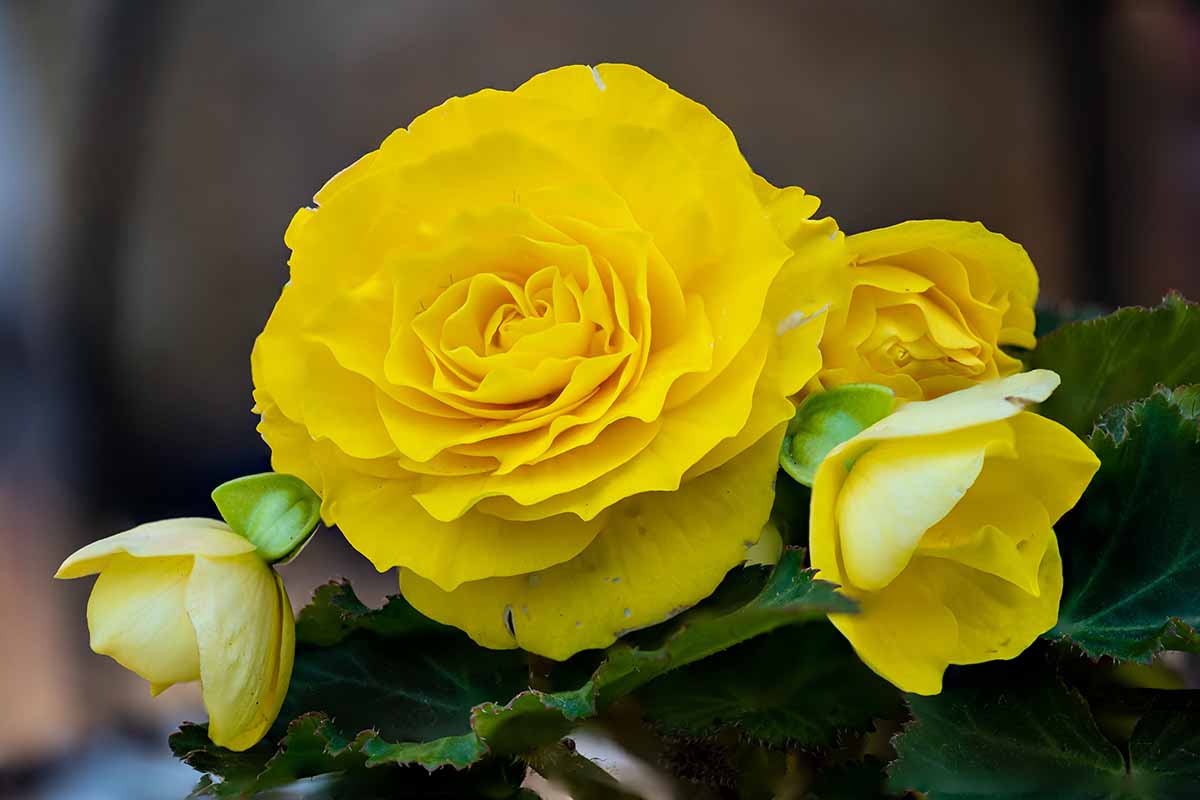
Moisten the media in every container, seal every inside its personal plastic baggie, and expose the containers to oblique mild indoors.
As soon as roots kind in two to 4 weeks, carry the cuttings into direct mild and progressively open their baggies over a three-day interval to wean the cuttings off of the surplus humidity.
At this level you’ll be able to harden them off outdoors, utilizing an identical protocol as described above. After that, you’re good to transplant them!
From Tubers
In case you select to develop these vegetation from tubers, you’ll want to tug the tubers from storage or buy them. You’ll wish to begin them in February or March for June or July blooms.
Fill containers with a 50:50 combination of peat moss and perlite. Plant the tubers slightly below the floor, concave sides up, and water them in to moisten the medium.
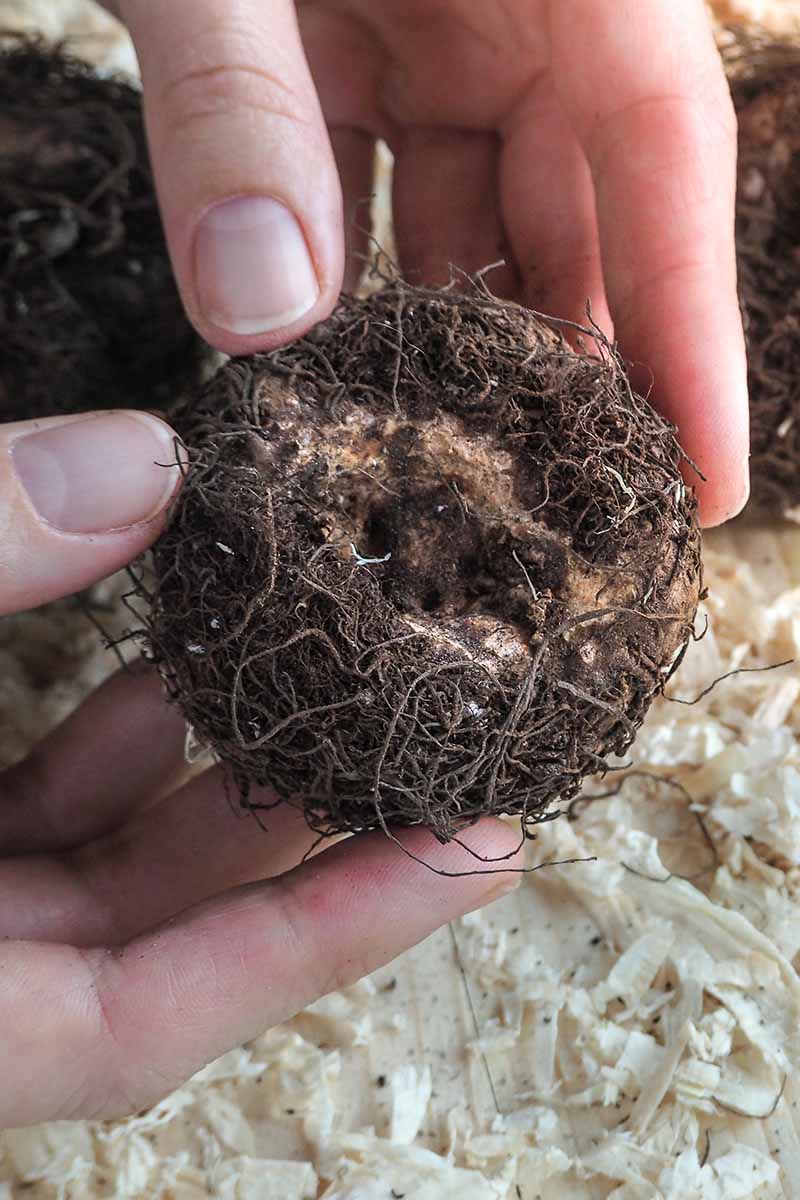
Expose the containers to oblique mild indoors, whereas protecting the media moist and the ambient temperatures round at the very least 70°F.
As soon as the stems emerge and attain an inch in peak, it’s best to repot the tubers into bigger containers.
The variety of stems determines flower measurement. To encourage massive flowers, pinch off extra stems as soon as they attain three inches tall.
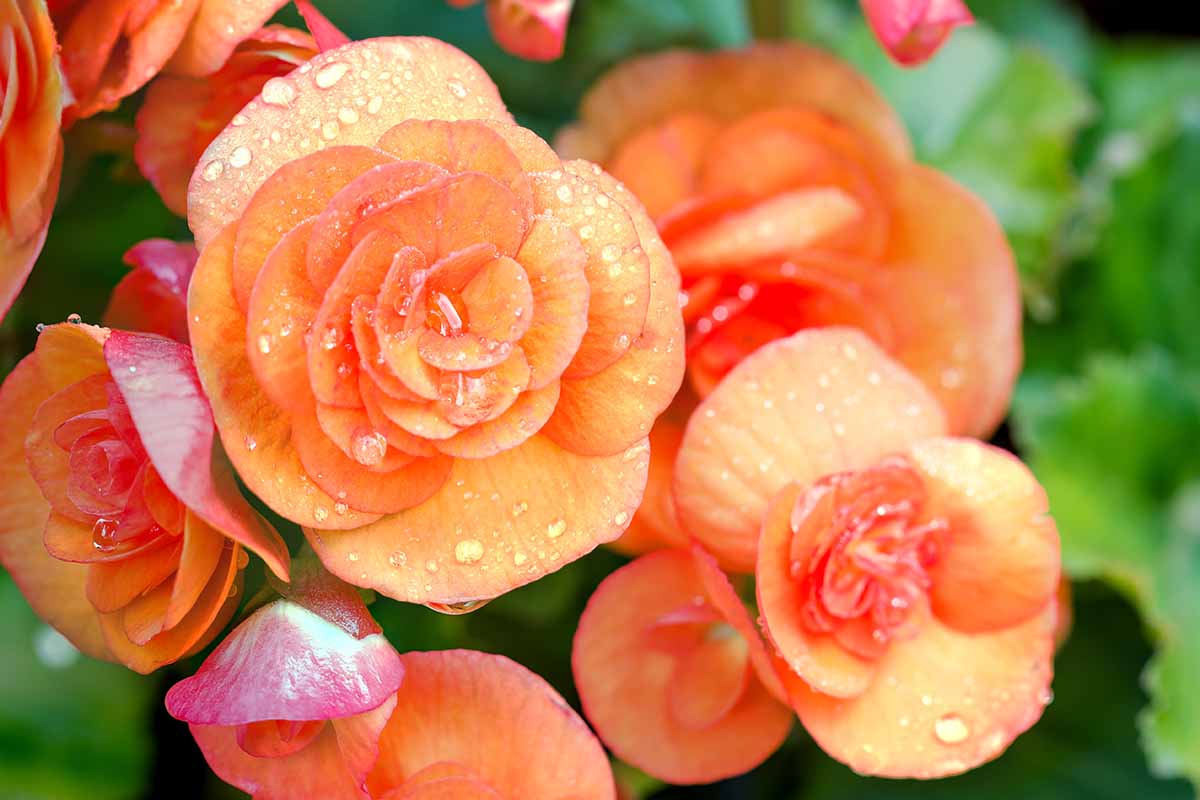
“Extra” means greater than two to 3 stems for a small tuber, or greater than three to 6 for a big one. For multi-flora varieties the place profuse blooms are the aim, ignore this advice.
A fortnight earlier than the frost-free date, harden off your plantings utilizing the above protocols.
Now, it’s transplanting time!
By way of Transplanting
To transplant tuberous begonias, put together fertile and well-draining planting websites with a pH of 5.5 to six.5.
House these spots about eight to 12 inches aside, in wind-shielded areas which are both partially shaded or uncovered to dappled daylight.
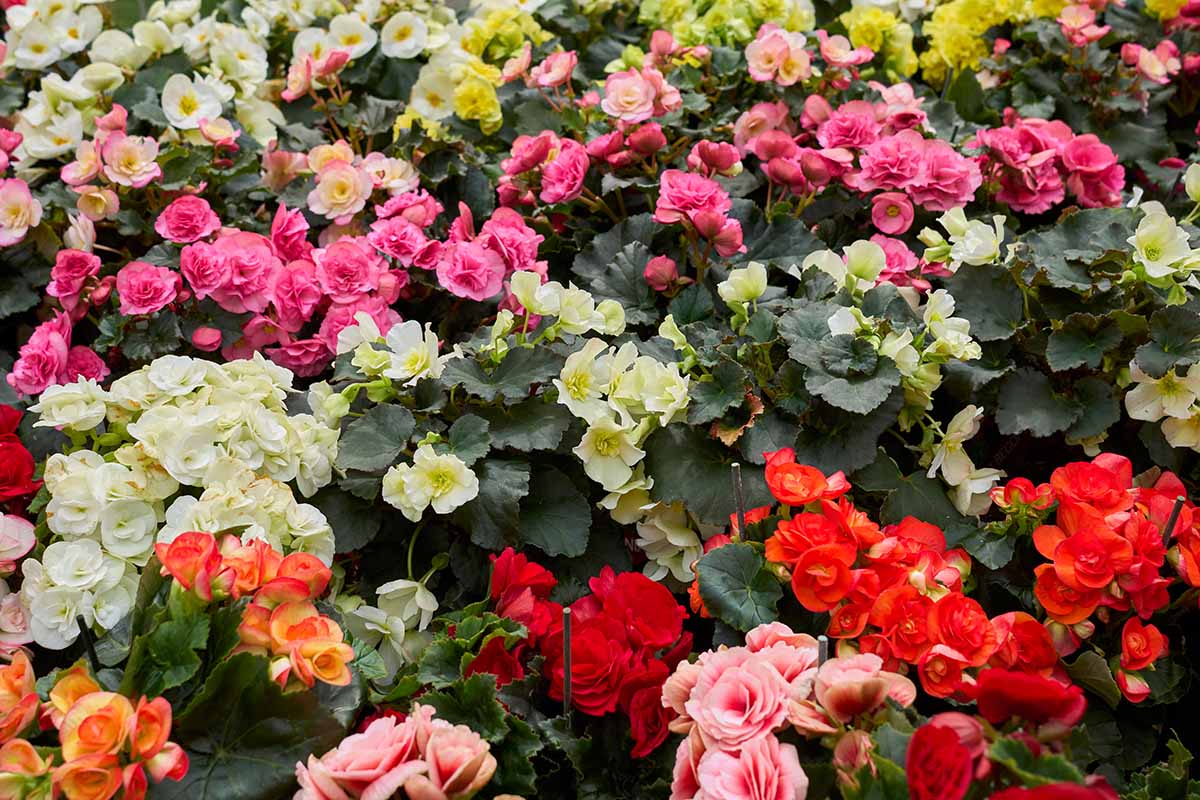
As soon as your websites are prepared, dig holes in regards to the depth and width of the foundation methods.
Decrease the transplant in and backfill with soil, ensuring that the tubers are lined an inch or two under the soil line. Water them in, and preserve the encircling soil moist.
Learn how to Develop
Such attractive flowers can’t look their finest with subpar care. For really jaw-dropping blooms, the next tips ought to enable you to out a bit.
Local weather and Publicity Wants
Normally, tuberous begonias could be grown as perennials solely in USDA Hardiness Zones 9 to 11, as they’re fairly frost-sensitive.
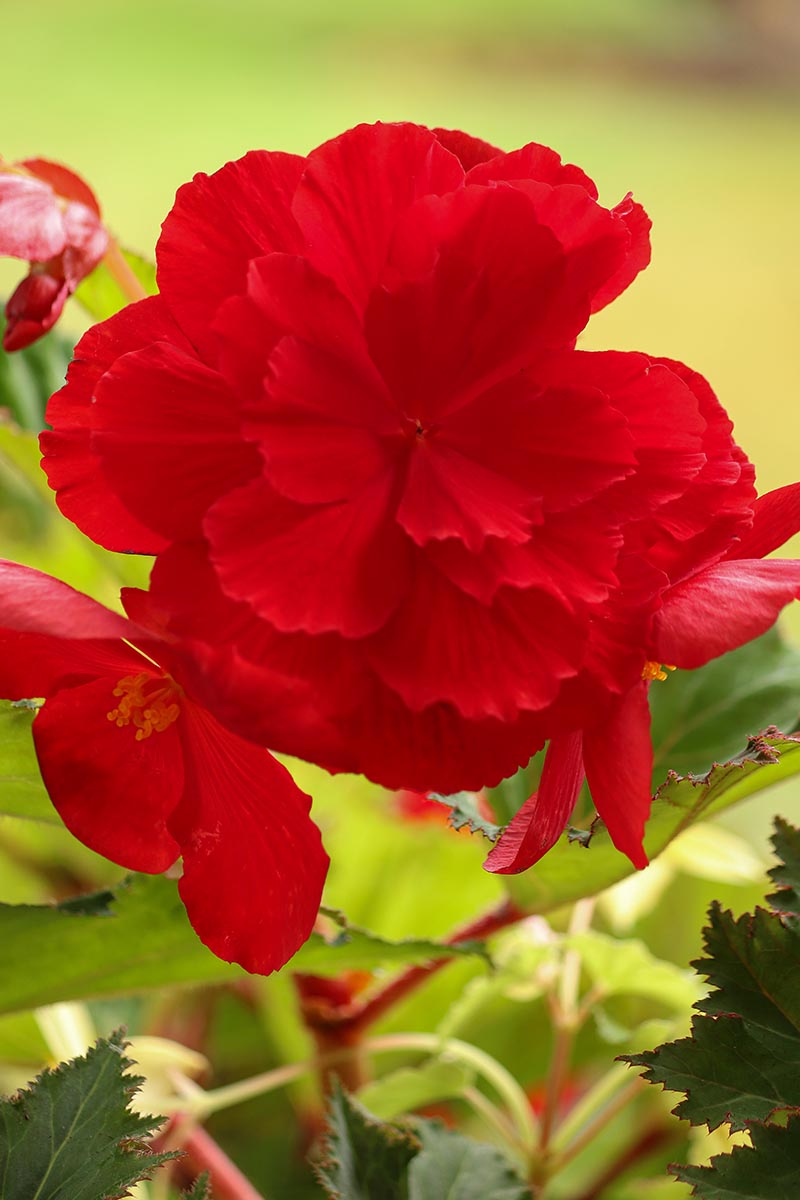
In colder areas it’s best to plan to develop them as annuals, or elevate the tubers for winter storage earlier than the primary frost.
Partial shade and dappled daylight are each optimum, together with safety from wind.
However don’t get me incorrect – these guys nonetheless love contemporary air, simply not when it’s shifting rapidly. Bear in mind to supply satisfactory circulation!
Soil Wants
Present soil that’s well-draining and fertile, with a pH of 5.5 to six.5. For fertility, working an inch or two of compost or well-rotted manure into your beds every spring is a great transfer.
Water and Fertilizer Wants
Tuberous begonias love to sit down in moist soils, so make sure you preserve that soil moisture all through the rising season.
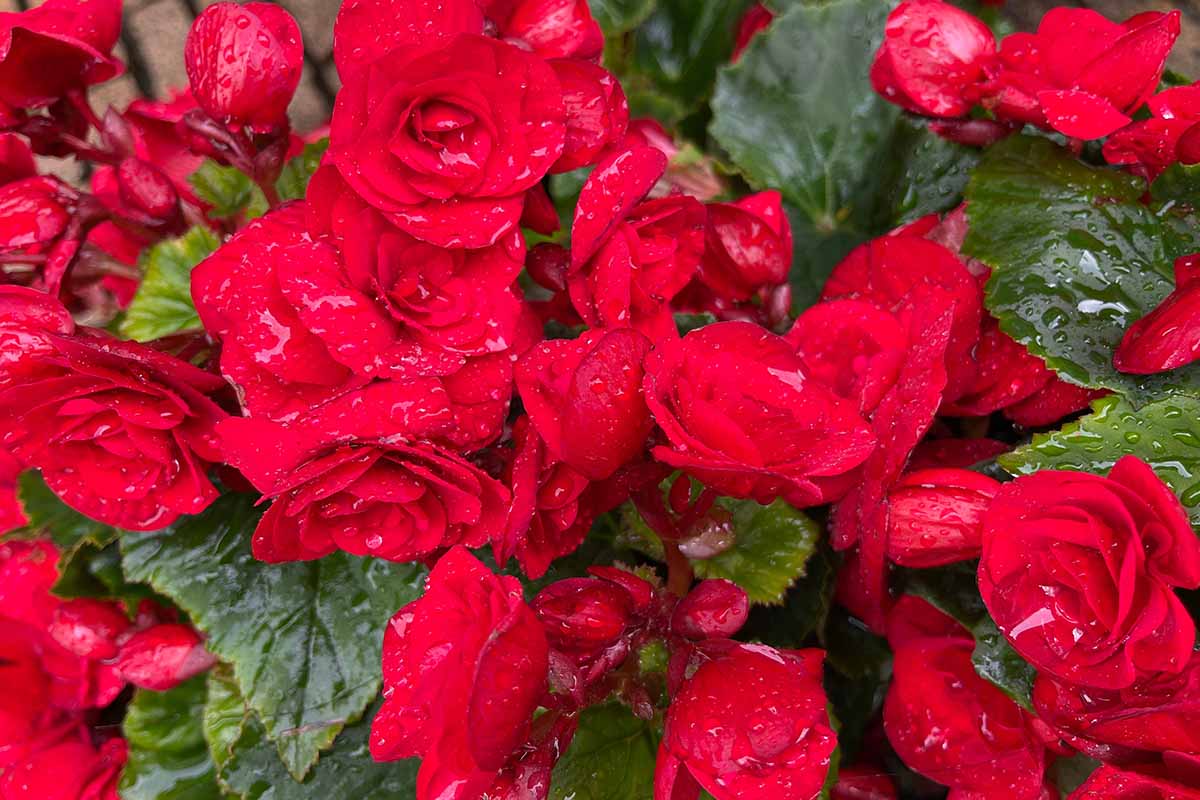
“Moist” doesn’t equal “saturated,” although, so in case your vegetation are sitting in water, you’ve undoubtedly over-irrigated.
Making use of a balanced fertilizer that’s diluted all the way down to half-strength each two weeks through the rising season ought to work simply fantastic.
An ideal product for the job is that this quart of 20-20-20 NPK liquid fertilizer from EZ-gro, which is on the market to buy from Amazon.
Rising Ideas
- For optimum progress, present dappled solar or partial shade publicity.
- The perfect soil is well-draining and fertile with a pH of 5.5 to six.5.
- Keep soil moisture, and feed each two weeks with a diluted, balanced fertilizer.
Pruning and Upkeep
Through the rising season, deadheading spent blooms can go a good distance in stopping illness and maintaining aesthetics.
For specimens in USDA Hardiness Zones 9 to 11, it’s best to stop watering and fertilizing as soon as their shoots begin to wilt, yellow, and/or drop in fall.
Make an observation of the place the tubers are positioned in your gardening journal, so you’ll be able to resume caring for them promptly as soon as dormancy ends.
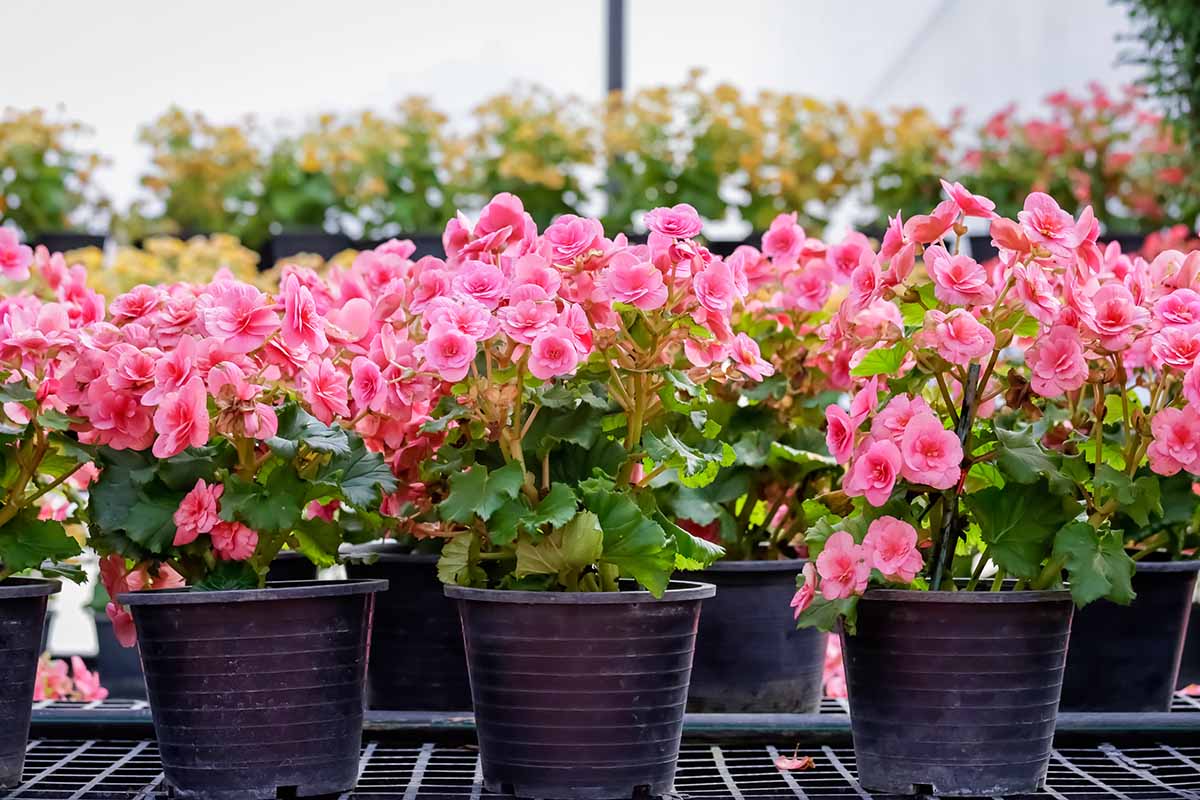
In climates colder than Zone 9, tuberous begonias received’t survive the winter open air.
In case you don’t wish to save the tubers, merely composting the vegetation on the finish of the rising season is all that’s needed. However when you want to reuse tubers for years to return, right here’s what it takes:
Stop watering and fertilizing your specimens earlier than your space’s first frost date.
After that first frost, dig up your tubers, shake them freed from soil, reduce the shoots to a peak of 5 inches, and permit the tubers to dry out in a heat, moisture-free spot indoors.
As soon as the shoots are dry and crinkly, it’s best to be capable to pluck them off with ease, though it’s finest in the event that they fall off naturally.
When the tubers are trimmed, put every in its personal paper bag, place the luggage in a cardboard field or breathable container, and retailer it in a darkish, cool, and dry spot indoors. In case you want a precise temperature, shoot for one thing within the 40 to 50°F vary.
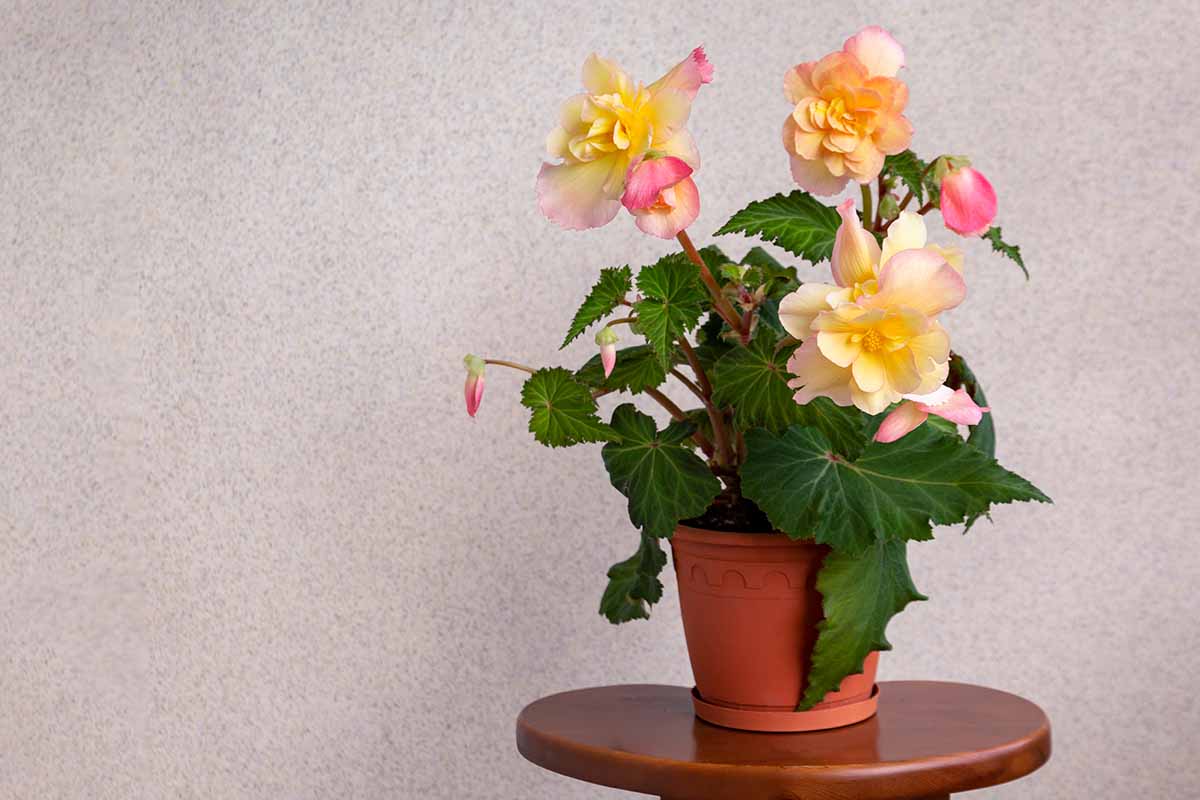
Verify the tubers periodically for rotting, pests, and indicators of illness.
It can save you tubers with little rotted spots by eradicating stated spots, redrying the tuber, and dusting it with a little bit of sulfur. However in any other case, it’s best to pitch tubers.
That’s the great thing about inserting every in its personal paper bag – if one displays rotting, an infection, and/or infestation, it received’t unfold to the others!
Cultivars to Choose
As a bunch, Begonia x tuberhybrida cultivars are all price deciding on, when you ask me.
However despite the fact that they could say in any other case, each human and plant dad and mom are inclined to select favorites. Subsequently, I’m going to the touch on 5 of my prime picks.
Hanging Basket Scarlet
In relation to Hanging Basket ‘Scarlet,’ you get precisely what’s marketed.
Reaching a peak and unfold of 10 to 12 inches, this selection flaunts good scarlet double blooms from late spring to frost that cascade over the edges of containers.
Rising from late spring to frost, these blooms attain widths of two to 5 inches.
In case you’re on the lookout for attractive blood-red flowers to hold over the edges of your hanging basket, you’ll be able to hardly do higher than Hanging Basket ‘Scarlet.’
Nonstop Hearth
Rising as much as 12 inches tall and 16 inches vast, Nonstop® ‘Hearth’ is the cream of an already creamy crop.
The Nonstop® sequence is understood for its squat and heat-resistant line of long-blooming beauties that don’t require deadheading.
The four-inch flowers of Nonstop® ‘Hearth’ bloom from late spring to frost, and are completely majestic.
The petals are really flame-like, with pink margins that progressively morph into orange and yellow hues as you strategy the middle of the flower.
In case you ever wished to mix the lull of staring right into a bonfire with the majesty of admiring a flower, strive snagging an eyeful of Nonstop® ‘Hearth.’
Picotee Lace Pink
With six-inch gentle pink flowers which are laced with a frilly white edge, ‘Picotee Lace Pink’ truthfully jogs my memory of a ballerina’s tutu.
Not a glance that I assumed would work within the backyard, however ‘Picotee Lace Pink’ has proved me incorrect in spectacular style.
As a compact and bushy mound of sunshine pink flowers and darkish inexperienced foliage, this selection reaches 12- to 14-inch heights and 12- to 16-inch widths, and in addition has further warmth tolerance!
Blooming from midsummer to frost, ‘Picotee Lace Pink’ proves that good issues come to those that wait.
Roseform White
These varieties don’t lead you astray with their names, do they?
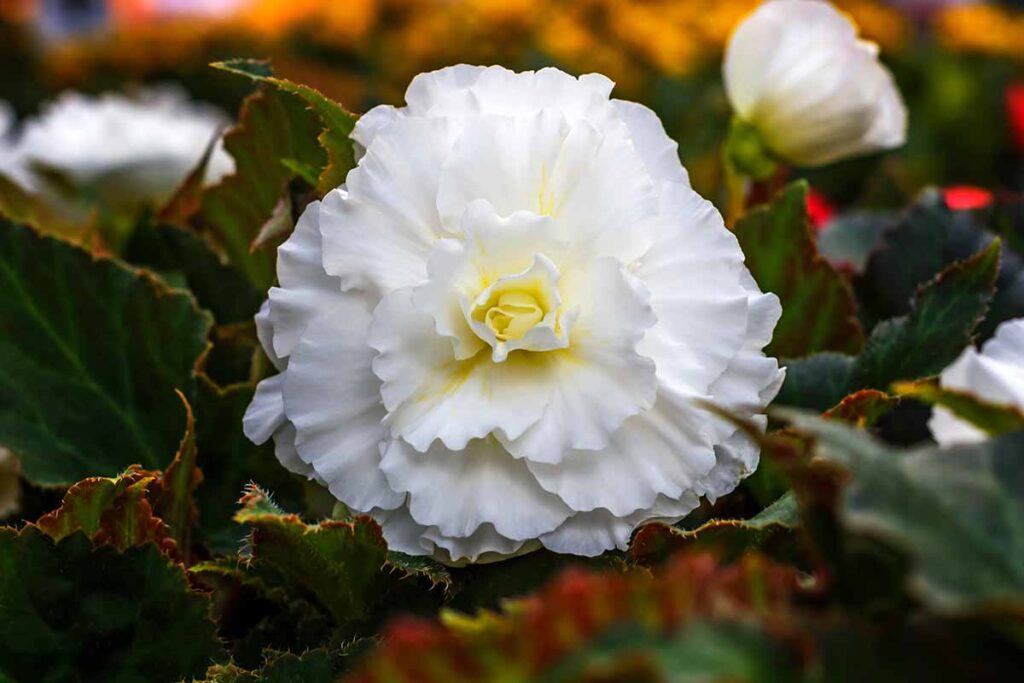
Reaching a peak of 14 to twenty inches and a diffusion of 10 to 12 inches, Roseform ‘White’ is an upright-growing knockout that flaunts four- to eight-inch, rose-shaped white flowers.
These blooms blossom from midsummer to frost, and stand out in stark distinction to the extra colourful beauties in your backyard. Plus, they’re an ideal solution to get the rose aesthetic sans thorns.
A pack of three Roseform ‘White’ tubers is on the market for buy from Eden Brothers.
Ruffled Yellow
“Ruffled” issues get a nasty rap. Ruffled feathers, ruffled shirts, different examples… However I consider ‘Ruffled Yellow’ can actually change issues round.
Maturing to heights of 14 to twenty inches and widths of 12 to 16 inches, Ruffled ‘Yellow’ has five- to nine-inch yellow flowers with semi-ruffled petals.
The blooms make their look from midsummer to frost, whereas the plant as a complete is heat-resistant and surprisingly compact.
To buy three tubers of ‘Ruffled Yellow,’ go to Walmart.
Managing Pests and Illness
Maintaining your tuberous begonias freed from pests and illnesses is crucial for top-tier aesthetics. And though they’re immune to deer and rabbits, these vegetation are susceptible to a couple different points.
Pests
Together with the harm that they trigger, bugs can vector pathogens. So by controlling them, you too can assist to maintain your vegetation freed from illness!
Black Vine Weevils
Also referred to as Otiorhynchus sulcatus, the black vine weevil is a pest of many alternative vegetation.
The shiny black grownup beetles attain a half-inch in size, whereas the C-shaped, legless grubs are white-bodied with a reddish-brown head.
As soon as they hatch from their eggs in midsummer, these larvae feed on tuberous begonia roots under the soil line nicely into fall, which may result in shoot wilting and total plant dying.
To manage the grubs whereas they’re energetic, a soil drench of useful nematodes will make quick work of them. Really useful nematode species embody Heterohabditis heliothidis, H. bacteriophora, and Steinernema carpocapsae.
The latter two could be bought from Arbico Organics.
Slugs and Snails
Whether or not shelled or shelless, these mollusks are an actual ache.
These pests eat irregularly formed holes with easy edges from the foliage of your B. x tuberhybrida specimens, leaving nasty slime trails of their wake.
Snail and slug management is multifaceted. First, do your finest to remove unnecessarily shaded elements of your panorama – pull weeds, take away adjoining plant detritus, and so forth.
When positioned round weak plantings, bodily obstacles similar to eggshells, espresso grounds, and diatomaceous earth can deter snail and slug motion.
To go on the offensive, it’s best to wait till dusk when slugs and snails feed. Exit with a flashlight, bodily choose them off your plantings, and eliminate them.
You may even set beer traps to draw and drown the pests. For a set of three plastic beer traps, head on over to Gardener’s Provide.
Thrips
Tiny, slender bugs from the order Thysanoptera, thrips are fairly robust to see, although the signs of an infestation are way more obvious.
Thrips feed by piercing a plant’s dermis and extracting the fluids inside, resulting in discoloration and distortion of the construction.
In tuberous begonias particularly, thrips feeding can kind reddish-brown traces on the higher sides of leaves and pale spots on leaf undersides, whereas warping the leaf’s form.
For thrips administration, you’ll be able to bodily knock them off your vegetation with sturdy sprays of chilly water.
Chemically, sprays of insecticidal cleaning soap throughout their energetic interval from spring by midsummer can kill them.
Helpful predators similar to spiders and minute pirate bugs assist with thrips management, so it’s essential to keep away from the usage of systemic pesticides that may scale back their populations.
Significantly injured and infested vegetation must be pruned and/or destroyed.
Study extra about learn how to take care of thrips in our information.
Illness
Sanitation goes a good distance in stopping illness. Utilizing pathogen-free plant inventory, clear soils, and sterile gardening implements are however a couple of methods to maintain your plantings wholesome.
Powdery Mildew
Brought on by a wide range of fungal pathogens, powdery mildew is extra of a beauty situation than a big well being downside… However with vegetation as gorgeous as tuberous begonias, lowered aesthetics are undoubtedly trigger for concern.
Overwintering in close by plant detritus, reproductive constructions launch spores come spring, particularly in heat and humid situations.
Selecting plant tissues, the spores trigger a white powder to kind on plant surfaces, which may trigger the shriveling, yellowing, and dropping off of contaminated tissues.
Forestall powdery mildew an infection by disposing of adjoining plant detritus, offering ample air circulation, and avoiding overhead watering. If the illness is an actual concern for you, making use of fungicides preventively isn’t a nasty thought.
Contaminated constructions must be pruned and destroyed.
Study extra about powdery mildew and learn how to management it in our information.
Root Rot
Regardless of being underground, roots want oxygen. And each time there’s an absence of it on account of soil compaction and/or extra water, the roots and tubers can suffocate, inflicting the aboveground shoots to endure in each well being and look.
Prevention is the most effective type of remedy, truthfully – present well-draining and aerated soil, and do your finest to not over-irrigate. Shoot for soil that’s moist, not oversaturated.
If nearly all of the plant’s tuber and root system are mushy and past saving the specimen must be lifted and destroyed.
Stem Rot
Brought on by the soil-borne water mould Pythium ultimum, stem rot leaves contaminated stems water-soaked and darkened, which may result in the plant’s collapse.
Not a superb factor, even for the pendulous forms of Begonia x tuberhybrida that rock the “flopped over” look.
As extra water can result in issues, it’s essential to supply satisfactory airflow whilst you keep away from over-watering. Burying tubers too deeply also can result in an infection.
Rotating between totally different fungicides can work to forestall stem rot.
However within the case of an infection, it’s best to pitch contaminated vegetation and both strive once more in a brand new planting website, or with contemporary soil in a sanitized container.
Greatest Makes use of
As any mannequin on LinkedIn is aware of, being lovely gives loads of alternatives.
The flexibility of a Begonia x tuberhybrida is nicely and really huge. Truthfully, you would set one atop a big pile of rubbish, and the plant might nonetheless carry a tear to your eye… on prime of the trash’s eye-watering stench!
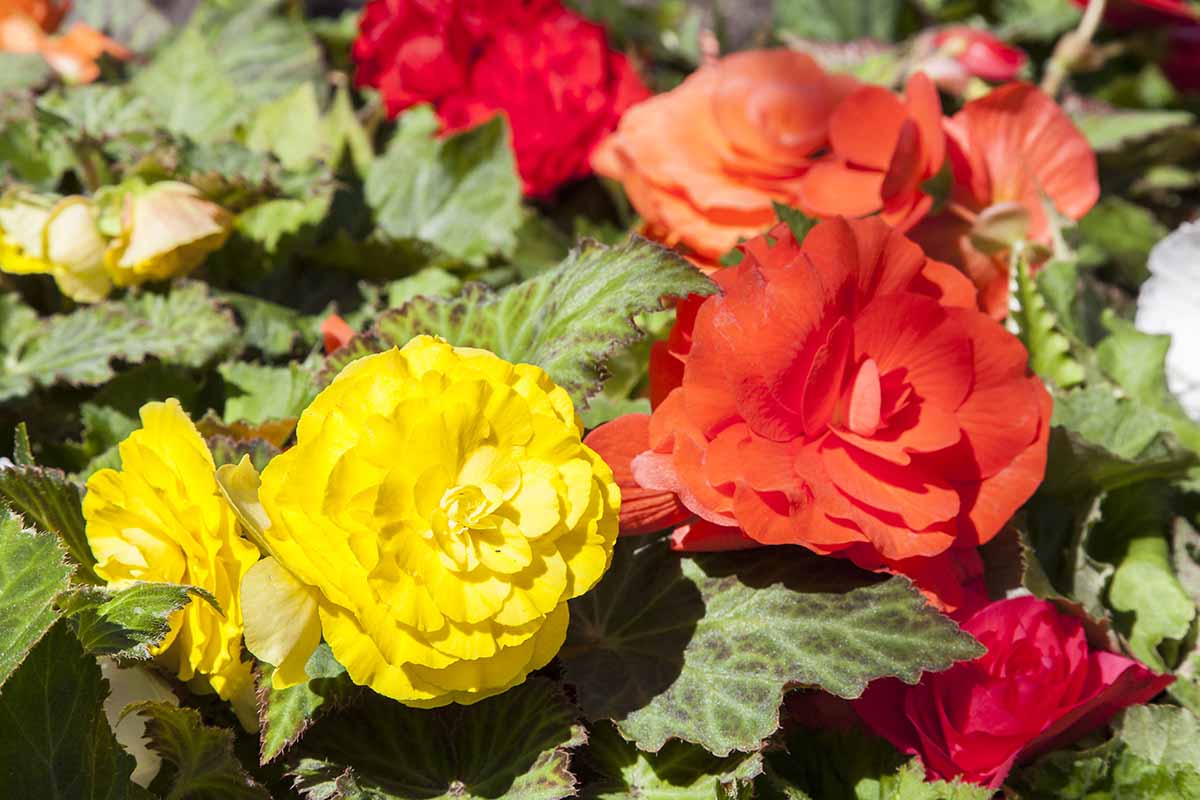
Tuberous begonias work splendidly in massive teams, whether or not as a massed grouping in a flower mattress or lined up as a border.
They will additionally astound and amaze in containers, window containers, or hanging baskets, and so they look completely improbable when positioned round a patio.
They will also be grown as houseplants… however that’s a subject for one more day. Be looking out for our upcoming information to rising begonias indoors!
Fast Reference Rising Information
| Plant Sort: | Flowering herbaceous perennial | Flower/Foliage Coloration: | Orange, pink, pink, white, yellow/inexperienced |
| Native to: | Cultivated hybrids | Water Wants: | Reasonable |
| Hardiness (USDA Zones): | 9/11 | Upkeep: | Excessive |
| Bloom Time: | Late spring-fall | Tolerance: | Black walnut juglone, deer, rabbits |
| Publicity: | Dappled solar or partial shade | Soil Sort: | Fertile, moist |
| Time to Maturity: | 3 months to bloom from tubers | Soil pH: | 5.5-6.5 |
| Spacing: | 8-12 inches | Soil Drainage: | Properly-draining |
| Planting Depth: | Barely under soil line (tubers) | Makes use of: | Beds, borders, containers, flower beds, hanging baskets, houseplants, window containers |
| Top: | 6-18 inches | Order: | Cucurbitales |
| Unfold: | 12-18 inches | Household: | Begoniaceae |
| Development Charge: | Reasonable | Genus: | Begonia |
| Widespread Pests and Illnesses: | Black vine weevils, slugs, snails, thrips; powdery mildew, root rot, stem rot | Species: | x Tuberhybrida |
True Flower Energy
The ability of a beautiful bloom can’t be understated. And now that you may develop and take care of tuberous begonias, you’ve received the floral equal of China’s Three Gorges Dam.
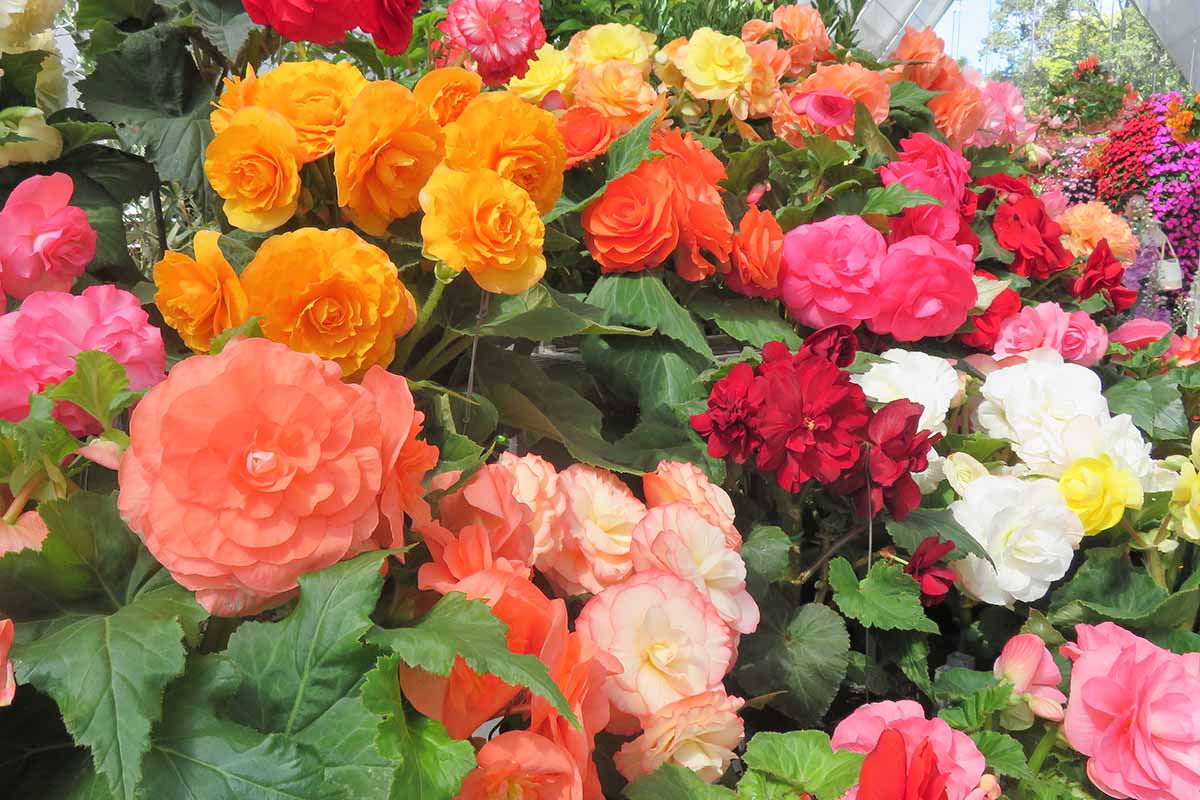
A little bit of an exaggeration? Maybe. However the one solution to know for positive is to domesticate some for your self.
Questions? Remarks? All of it and extra can go within the feedback part under!
Serious about different flowering vegetation? Right here’s a couple of guides on some summertime bloomers:

